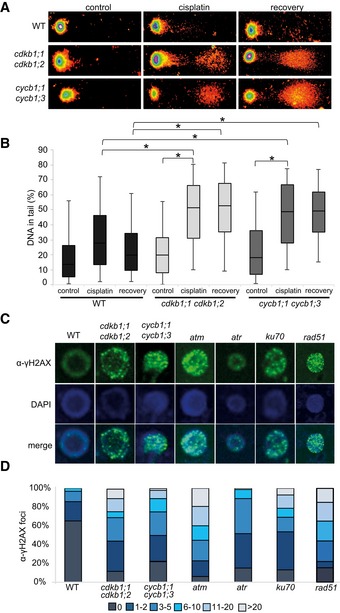Figure 2. Mutants of cdkb1 and cycb1 show increased number of DSBs and delayed DNA repair upon cisplatin treatment.

- Representative examples of comets of 21‐day‐old wild‐type plants, cdkb1;1 cdkb1;2 and cycb1;1 cycb1;3 double mutant seedlings in full spectrum view of the TriTek Comet Score software. Shown are comets of plants incubated with 50 μM cisplatin for 1 h and then transferred to medium without cisplatin for 30 min (recovery) and plants incubated without cisplatin for 1 h (control), respectively.
- Box plot of percentage of tail DNA of wild‐type cells, cdkb1;1 cdkb1;2 and cycb1;1 cycb1;3 double mutants under cisplatin treatment. Plots are based on analyses of 200 cells per sample from random microscopic fields of three independent biological replicates. The percentage of DNA fragments in the comet tail was calculated by the TriTek Comet Score software. The box represents the interquartile range, the line across the box indicates the median values, and whiskers represent 5–95 percentile values. Brackets connect plots of sample groups that are significantly different with a confidence level higher than 99.99% calculated with Student's t‐test.
- Immunostaining of γ‐H2AX foci in wild‐type plants and mutant cells after 2 h of treatment with 50 μM cisplatin.
- Counted numbers of γ‐H2AX foci per cell detected after 2 h of treatment with 50 μM cisplatin in wild‐type and mutant plants. For each sample, the γ‐H2AX foci of 100 cells were counted and grouped into six categories: cells with no, 1–2, 3–5, 6–10, 11–20, and more than 20 foci per cell.
